Google Now, Glass, And Designing Context: SlashGear Talks Wearables With Matias Duarte
Google Now doesn't get the recognition it deserves, but that will change if Google's Matias Duarte, director of Android user experience, has anything to do with it, and it may well be in a comfortable marriage with Project Glass. SlashGear sat down with Duarte at Mobile World Congress this week to talk Google Now and how it and Glass, not only share some common DNA, but might well find themselves the future of Android itself.
Duarte's role at Google has been to coax a more design-led attitude out of product development, something he himself admits that the search giant hasn't, historically, been great at. He came to the job with good credentials, too, integral in developing webOS – pre-HP acquisition – which, for all its faults, was well regarded for its user-friendly aesthetic.
Most recently, though, Duarte has been integral in refining the Google Now experience, a process which began in an inter-disciplinary meeting back in November 2011 and culminated, in its first iteration at least, at Google I/O in July last year. For those unfamiliar, Google Now turns the "portable computer" nature of smartphones on its head, instead using a powerful contextual engine to suggest information that your Android smartphone believes will be relevant at any one time.
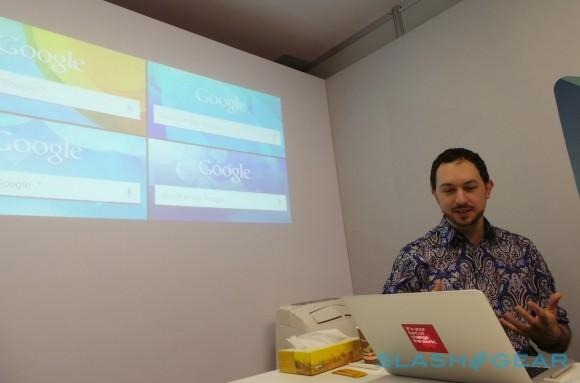
That could include flight details if you have travel coming up in your calendar or Gmail, driving directions to your next appointment (or public transportation guidance if you tell Google Now you're more likely to use it), weather information, or even just a pedometer summary at the end of the month, showing how many steps you've taken while carrying your Android phone. However, the simple suggestions mask an altogether more important change in how Google sees its search results: with greater confidence that its top result is the one you're probably looking for.
[aquote]Google Now is a new paradigm[/aquote]
Asked whether Google Now is in grooming to be the new Android homescreen, Duarte told us that he feels "it has the potential to be." In fact, it's already the first place he usually begins his smartphone journey. "For me, Google Now is the place I go to all the time, and that's why it was so important for us not to create a new location to bring assistance, but to go to the place where people were going to start searching the web, or searching their phone, with Google, and make that the place where these assisted cards could appear" he explained. "It's kind of a new paradigm, and one which I think does speak to the future of this very helpful type of computer interface, as opposed to the current start screens where you have to make all the choices, it's almost like a computer control panel in a rocket ship where there's lots of icons you have to punch-punch-punch."
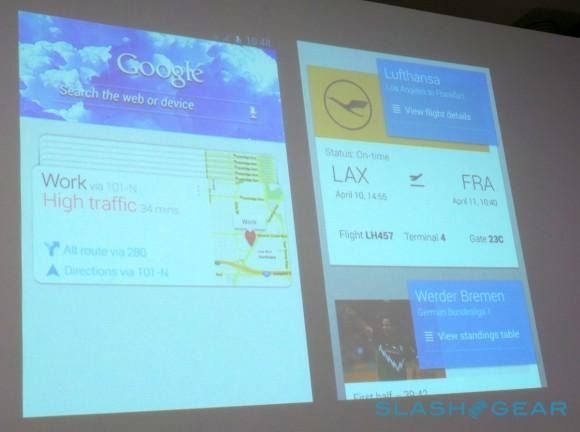
Google Now differs from traditional search results in that, while it calls upon the same engine, it takes a more definitive stance on presenting an answer. The development team quickly decided that it would need to have a distinct visual identity, separate both from Android and Google on the web, and that the snackable data it gave would have to be pared down rather than a list of blue hyperlinks. That focus on the right answer, not the range of answers, has since been echoed in Google Glass, which shares similar interface dynamics: a small display footprint, intended for at-a-glance consumption, so that it fits into life's routines rather than demanding full attention.
"[Project Glass] was very exciting, because the design work we did for Google Now kind of served as a really strong touchpoint for some of the design work that happened with the Glass team" Duate told us. "In fact, members of my team collaborated very closely with members of their team in doing that. And the kind of bold, typographic version of Google that is confident about giving you an answer, and confident about giving you the big picture – very different from the old Google – that's present in Glass, and I find that really satisfying and really exciting."
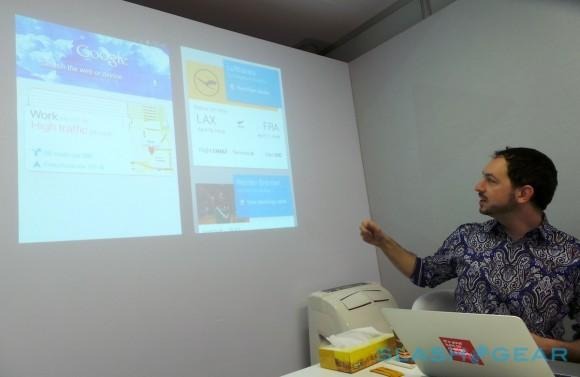
Duarte shares a similar obsession with wearables like Glass with many of us, though he told SlashGear he's yet to try the Pebble smartwatch. But in general the wearables space, I think it's terrific, because for as long as I remember it I've been excited about Android because it is the computing platform for everything" he told us, sticking perhaps a little closely to the company line. "So I'm just waiting for the screens to show up so we can put Android on them, and now we really are starting to see wearable screens, and that's great."
[aquote]Designers have a responsibility: to make users be present in the real world[/aquote]
However, beyond the expansion of Android, Duarte's interest in wearables is as a user-experience expert, and in how the growing persistence of data – contextual and otherwise – will affect the way we interact not only with our devices but in social settings. "At a greater level, this question of user's attention and user's immersion into technology, I think is something we as designers have a big responsibility to pay attention to" he said. "I think one of the challenges with technology is how we can use it to make our lives better, but actually to be present in the real world while we're using it, not just sucked into the technology. And part of that is the minor cycle of distraction while you're using one part of your phone, and the icons for other things can distract you about other parts of your phone."
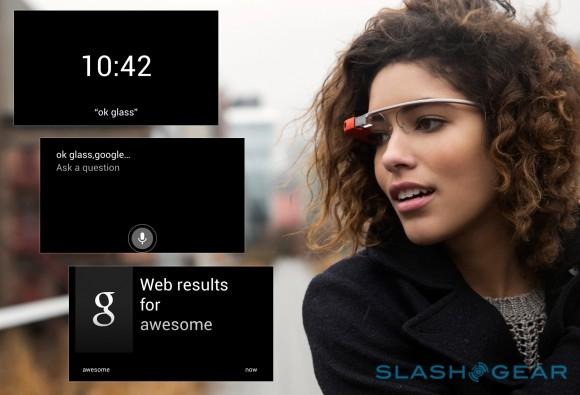
"But the challenge that I find even more exciting, is when you're in a room with people, or when you're out and about, how do you keep from even getting sucked into the phone, how can we be smarter about when to notify you about things, how can wearable technology allow us to notify you, or immerse you in data, in less intrusive ways?" It's a question that has been asked on many occasions since the first Project Glass concept video was released: will wearers simply end up interacting with a persistent smartphone in their peripheral vision, losing all contact with the people around them.
As Duarte sees it, part of his responsibility to users – and that of his team at Google – is to "put you in control of when you decide to deal with that online world." That's not so simple as cutting out the flow of data altogether, as we usually do when we drop our phones in pockets or bags. Indeed, it'll require an even greater bond between wearer and device, something into which design plays a hugely significant role.
Duarte actually thinks Glass is already a beautifully designed product, and disagrees with the suggestions of some that the headset needs a redesign in order to be palatable to a more general audience. Still, he concedes that there are more pressing aesthetic questions around wearables than current smartphone technology. "Whenever you bring technology into your personal space, it's a really hard challenge" Duarte points out. "The challenge of designing phones is almost the same thing, except that for [the Glass team] it's dialed up to 100."
Rumors have circulated recently that the Glass team might be working with a US designer to refine the wearable hardware; Duarte wouldn't comment on that specifically, but he did point out that the development cycle – including aesthetics – is so rapid, what may seem clunky in the first iteration will quickly be refined tomorrow.
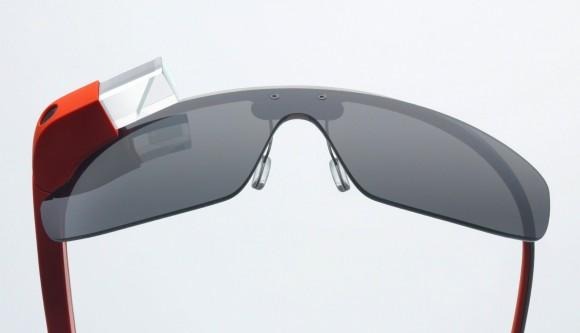
"If you look at the devices we have today, it's amazing how much like jewelry they are. Even four, six years ago, the phones we had – if you go back in time – they're huge! They're clunky, they're plastic, they're terrible" he told us. "Today, a product like Nexus 4, has kind of the precision and polish and feel of, like, a really beautiful Art Deco cigarette case. And yes it's functional, but it's also a fashion accessory. And I think all technology goes through that curve, when you first have something which looks really, y'know, technologically clunky, like the original Motorola StarTACs, and then it becomes something that there is one for everybody, that meets their personal style; just something you fall in love with."
[aquote]Embrace the power of "and"![/aquote]
While Glass is a standalone product – albeit one that can tether to your 3G/4G smartphone for use outside of WiFi coverage – Duarte is confident that tomorrow's wearables will be more distributed than converged in a single point. Asked whether he would opt for a head-mounted display, like Glass, or a smartwatch, he told us that ""I always pick both when I'm faced with a choice like that" and that we should "embrace the power of 'and'!"
That's down to different form-factors still having relevance, even if they only contain a few sensors, or perhaps just one. Google's advantage in the fledgling market is one of breadth of user-base, the design exec points out, not to mention the not-inconsiderable amount in the bank. "I think the whole realm of wearables is really exciting" he said. "I think one of the cool things about Glass, and the way that Google approaches things, is that we have the scale and the opportunity to do things that are kind of outside the box, and I think there's a huge range of ways that we can get technology on you that are not obvious."
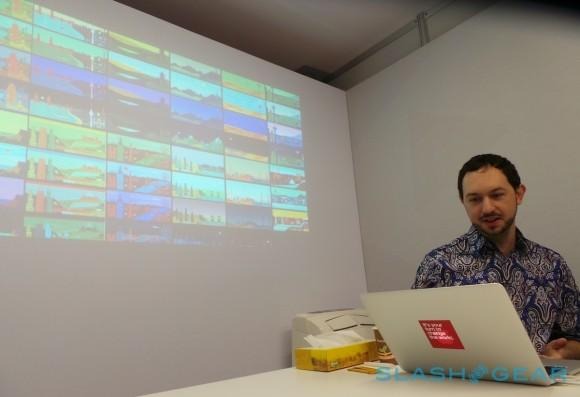
"Strapping technology to your wrist is something that we've all been used to for, what, hundreds of years now," he emphasized, "and I think that's actually really powerful, that's really cool. But that's just the beginning." Research into context, and about delivering relevant results without distractions, are "super-exciting questions" as well as "things we're going to be doing a lot of work on in the next few years."
For Google Now, meanwhile, it's still very much a work-in-progress. Duarte wouldn't give us any specific examples of where the context engine would go next, but it's clear that with the amount of work that has gone into Now so-far, it's likely to play an increasingly central role in future iterations of Android. As Glass reaches the consumer market, meanwhile, later in 2013, that will likely see Now's brand of confident predictions tested more thoroughly. Users might be less willing to accept misguided results on a mobile device versus in a desktop browser, but they'll be even less accommodating of poor suggestions floated in their wearable display. The Glass project – and indeed Google Now – are still young, but there's a lot about the future of Android that rests upon their reception and development.
